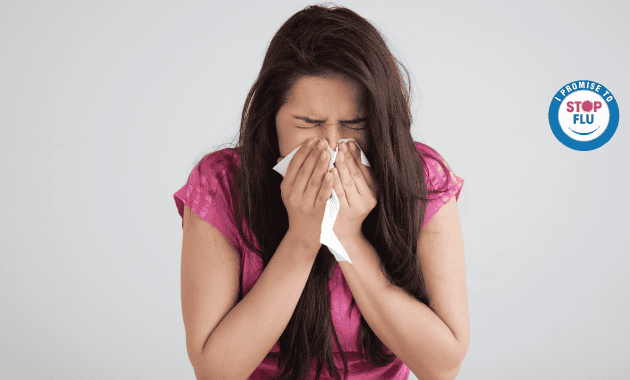
It was during one of those days when the weather was gloomy and it was fog outside that Meenakshi woke up with a sore throat and sneezing. As she had a five-year-old to take care of, she immediately took medicines for common cold.
The next day her father was down with fever and chills. As the symptoms were similar to hers, she thought it could be because the sudden changes in the temperature and gave him the same medications as hers. But his condition failed to improve even after two days. She took him to their family doctor, where upon diagnosis, he was diagnosed with the flu.
Most people believe that it could be a bit difficult to differentiate between the symptoms of flu and cold as both seem similar. However, if you look closer you can easily spot the difference between the two. So here we are to help you differentiate between cold and flu and provide you an important and effective tip to prevent flu.
Do Not Confuse Flu With Cold
Flu and the common cold are both respiratory illnesses. However, both the infections are caused by different viruses. Flu is contagious in nature which means it can spread from one person to the other through cough/sneeze droplets. Moreover, flu results in serious health complications if ignored. Here are a few key differences between flu and cold to be aware of.
1. High fever is one of the common symptoms of flu
People suffering from cold do feel slightly feverish, however, if you have a fever of 102 degrees or higher, it could mean flu. Ideally, high body temperature along with sore throat and cough is a tell-a-tale sign that someone is infected with the flu virus.
2. Colds usually go away on their own
If you have been experiencing symptoms such as cough, sore throat, stuffy nose, fever or weakness for more than 2-3 days, it is wise to consult a doctor. Ideally, the symptoms of cold subside within a few days and you may show improvement in your symptoms. However, the symptoms of flu may require medications or hospitalization to go away. Moreover, flu can also be fatal in some cases.
3. Flu can happen suddenly
When it comes to cold, the symptoms tend to develop gradually with mild sniffling, discomfort or congestion. These slowly progress into sore throat and the condition worsens. But that is not the case with the flu. The symptoms of the flu usually develop abruptly such that you feel sick the next moment or after waking up.
4. Body ache, headache, weakness and sore throat could mean flu
People suffering from the flu may show symptoms such as coughing, fatigue/weakness, body pain, headache and fever. Whereas, those with a common cold may complain about runny nose, nasal congestion, sneezing or sore throat. People with common cold are less likely to experience fever, weakness and body aches.
5. The symptoms of flu lasts longer
Unlike common cold, which usually lasts for around 3 – 5 days, influenza or flu lasts for more than five days. Also, the chances of complications are higher if you suffer from the flu. It is seen that people down with flu may develop respiratory conditions such as pneumonia, strep throat, bronchitis. The risk of complications is higher in people with low immunity, diabetes, heart disease and those with respiratory problems.
How To Deal With Flu?
One of the simple and effective ways to prevent flu is to get an annual flu shot. In India, the Ministry of Health and Family Welfare (MoHFW), recommends annual vaccination for people with chronic illnesses such as chronic obstructive pulmonary disease (COPD), bronchial asthma, heart disease, liver disease, kidney disease, blood disorders, cancer and for those who are immunocompromised.
With winter around the corner, the chances of getting affected with cold and flu are undoubtedly high. This is why you need to be extremely careful this season and pull up your socks before the flu knocks you down. Ask your doctor to know more about influenza vaccination today!
References:
1. Cold Versus Flu. Symptoms & Diagnosis. Seasonal Influenza (Flu). Centers For Disease Control and Prevention (CDC). Available from: https://www.cdc.gov/flu/symptoms/coldflu.htm
2. Is It a Cold or the Flu? Prevention, Symptoms, Treatments. The US Food And Drug Administration (FDA). https://www.fda.gov/consumers/consumer-updates/it-cold-or-flu-prevention-symptoms-treatments
3. Seasonal Influenza: Guidelines for Vaccination with Influenza Vaccine. Ministry of Health and Family Welfare (MoHFW). Directorate General of Health Services (National Centre for Disease Control). https://mohfw.gov.in/sites/default/files/Guidelines%20for%20Vaccination%20with%20Influenza%20Vaccine.pdf
Disclaimer: The views expressed in this article are independent and unbiased views solely of the publisher. This is a part of the public awareness initiative on influenza supported by Sanofi Pasteur India. Sanofi Pasteur bears no responsibility for the content of this article. One should consult their healthcare provider for any health-related information.
Updated Date: Nov 11, 2019 10:55:25 IST